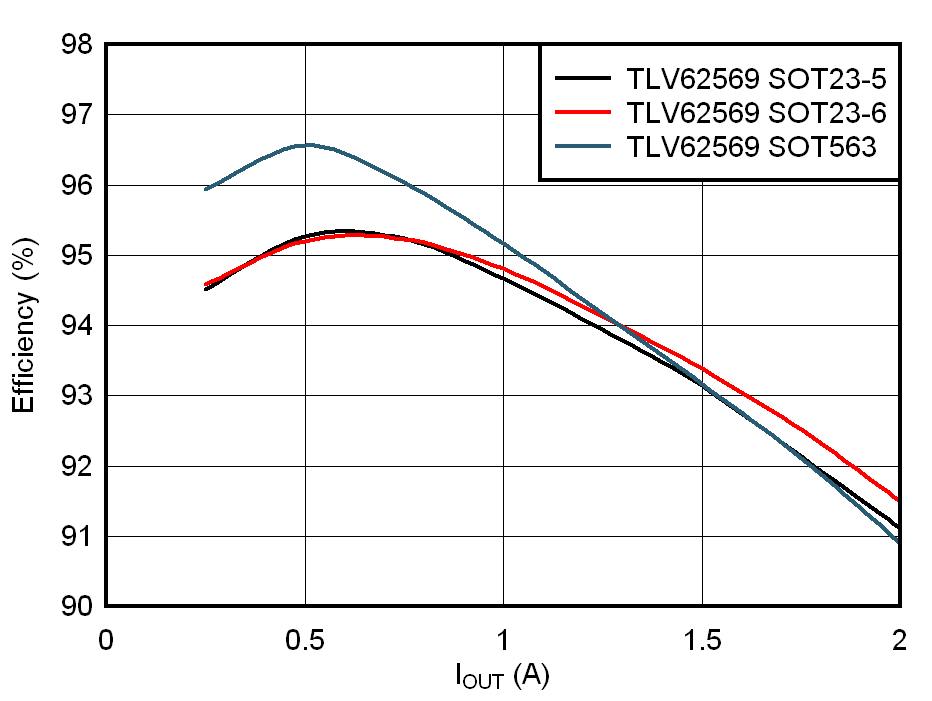SLVAEB1A March 2020 – October 2021 TLV62568 , TLV62569 , TLV62585
- Trademarks
- 1Introduction
- 2Describing the TLV62569 Package Technologies: SOT23-5, SOT23-6, and SOT563
- 3Understanding Thermal Performance and Junction Temperature Estimation
- 4Measurement Setup and Test Results
- 5Thermal Performance Analysis for SOT23-5, SOT23-6, and SOT563 Packages
- 6Summary
- 7References
- 8Revision History
4.1 Efficiency Measurements
For all the EVM boards using the same Bill of Materials (BOM) excluding the TLV62569 ICs, the efficiency is measured for an input voltage of Vin = 5.0 V and an output voltage of Vout = 3.3 V.
Figure 4-2 shows the results and the following two key points can be derived as shown in Table 4-2.
| OUTPUT CURRENT < 1 A | OUTPUT CURRENT > 1 A |
|---|---|
| SOT23-5 and SOT23-6 packages have similar efficiency up to 1A | Difference between SOT23-5, SOT23-6 and SOT563 is less significant than for light loads |
| SOT563 has the best efficiency up to 96.5%. | SOT23-6 has the best efficiency for loads above 1.5A |
 Figure 4-2 Efficiency Measurements on
TLV62569 EVMs for Vin = 5 V and Vout = 3.3 V
Figure 4-2 Efficiency Measurements on
TLV62569 EVMs for Vin = 5 V and Vout = 3.3 VIt also tests TPS563201 and TPS563202 performance. This test is on their public EVM board and test condition is 12Vin to 1Vout with same BOM. Figure 4-3 shows efficiency comparison between TPS563201 and TPS563202. From the figure, efficiency is similar at light loading. At full 3A loading, TPS563201 efficiency is a little higher than TPS563202.